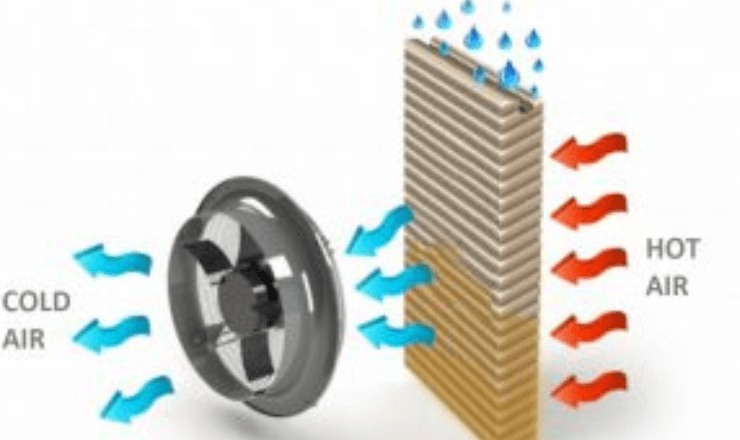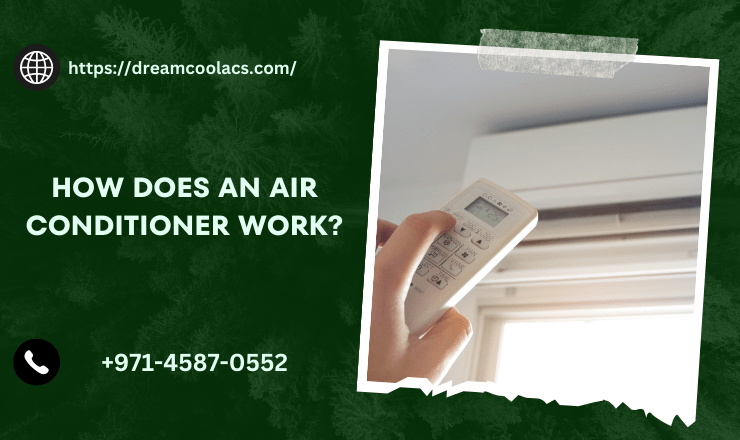Air conditioners are one of the essential inventions in modern times, providing us with a cool, comfortable environment in our homes, offices, and vehicles. However, not everyone understands how an air conditioner work. In this article, we’ll explain how air conditioners function and what makes them so effective.
For more services visit: AC maintenance Dubai
Understanding the Parts Of An Air Conditioner
Air conditioner systems typically consist of four main components:
Compressor
This part of the system compresses the gas, which changes it into a high-pressure, high-temperature vapor. Electric motors typically drive compressors and can be located outside or inside the home. Outside AC Compressor are generally quieter than indoor ones, as they can be located further away from the living space.
Condenser
The condenser removes heat from the gas to create a liquid. So, the condenser, the second-largest component of the air conditioner system, is located outside the home. It uses ambient air to remove heat from the refrigerant, which may become dirty over time and require maintenance.
For more services visit: AC installation in Dubai
Expansion valve
The expansion valve reduces the high-pressure, high-temperature vapor into a low-pressure liquid.
Evaporator
The evaporator is the third-largest component of the air conditioner system and is located inside the home. It absorbs heat from the air inside the home and transfers it to the refrigerant
How Do Air Conditioners Work?
An air conditioner is a device that modifies the temperature and humidity in a closed space. It transfers heat from the air inside the space to the outside atmosphere. Here’s a deeper look at how air conditioners achieve this.
Compression
The first step in the air conditioner’s process is to compress the refrigerant gas using a compressor. This compression increases the pressure and temperature of the gas, which then flows through the condenser coil. The condenser coil is an external heat sink that helps remove the heat from the gas.
For more services visit: chiller maintenance
Condensation
After passing through the condenser coil, the gas enters the expansion valve and undergoes rapid expansion, which causes its temperature and pressure to drop dramatically. The gas then flows through the evaporator coil, which absorbs the moisture from the air inside the space. As the air passes through the cool evaporator coil, the humidity is reduced, giving you a more comfortable environment.

Evaporation
Within the evaporator coil, the refrigerant gas changes from a liquid to a gas through evaporation. This is achieved through a series of tubes and fins that allow the liquid refrigerant to come into direct contact with the warm air inside the space. The heat from the air evaporates the liquid into a gas, returning to the compressor to complete the cycle.
Heat Exchange
The final step in the air conditioner’s process is to complete the heat exchange between indoor and outdoor air. This is done through a heat pump that moves the heat from the indoor air to the outside ambient air. As the heat is transferred between the two air streams, the indoor air temperature is lowered, and the humidity is removed.
Types Of Air Conditioners
As you can see, there are very basic and complicated explanations for “how does an air conditioner work”. The same applies to defining different kinds of air conditioners. Residential air conditioning systems are also available in various designs and configurations to fit the wide range of interior living spaces, from the newest tiny homes to 30,000-square-foot estates.
Read more: Types of AC
Although each type of air conditioner has unique applications, they all serve the same purpose: to keep your home cool. Depending on your location, your house’s size and physical constraints, and how you use it, you will need a particular cooling system.
Central Air Conditioning
The most popular kind of air conditioning device is by far central air conditioning. It is installed in large residential and commercial buildings and involves intricate ductwork systems to distribute cooled air throughout the structure. Central air conditioning is the most efficient and least costly method to cool large areas. Still, it is also the most expensive option to install and maintain, often making it impractical for smaller homes and apartments.
For more services visit: Central ac maintenance
Central air conditioning is powered by a compressor, which pressurizes the refrigerant gas and sends it through a condenser, which is cooled by exchanging heat with the surrounding air. The cold air is then pushed through insulated ductwork to the building’s ventilation system, distributing it throughout the space.
The cooled air is controlled by a thermostat, which monitors the temperature and cycles the compressor as needed. Central air conditioning is ideal for those looking for maximum comfort and energy efficiency in large spaces but requires a significant investment upfront.
Window AC Units
You might be wondering how an air conditioner work especially the window ac. Window AC units offer a cost-effective solution for households and small businesses that need to cool a few rooms. So, they are designed to be installed in the window of a room or a wall, which provides direct cooling and ventilation for that space. Window AC units can cool rooms more effectively than portable AC units and are much less expensive than central air conditioning systems. They are powered by a compressor pressuring and cooling the refrigerant gas.
For more services visit: AC duct cleaning Dubai
Unlike central air conditioning, window AC units do not require large ductwork systems, simplifying the installation process. The cooled air is then blown out of the window through a vent, which is discharged into the atmosphere. One of the drawbacks of window AC units is that they can be noisy and require regular maintenance, such as cleaning the filters and clearing the drain pan.
Ductless Air Conditioner
Ductless systems are not considered central air systems because they deliver cooling to specific, targeted areas within the home. It, like split systems, consist of at least one indoor unit and one outdoor unit linked by copper refrigerant tubing. Each indoor unit in a ductless system is made to only provide cool air for the space in which it is placed.
A single outdoor unit may be linked to several indoor units in some ductless systems. The operation is similar to a split system, regardless of the number of indoor units. The indoor device has a blower fan and an evaporator coil that draws warm air from the room and passes it over a cold evaporator coil before returning the cooler air into the room. The refrigerant runs through the copper tubing to the outdoor unit, where the compressor and condenser coil is located. Through the external condenser coil, the heat generated inside is dispersed. Because the cycle repeats as the refrigerant travels back to the indoor unit.
Conclusion
In conclusion, an air conditioner is an essential component of modern life. Although the technology of how an air conditioner work is complex, the basic principles of cooling and conditioning the air are quite simple. Because, the key to maximizing the efficiency and effectiveness of an air conditioner is regular maintenance, including filter changes and refrigerant checks. So, keeping your air conditioner in peak condition can ensure your comfort and enjoy the benefits of improved indoor air quality throughout the year.

